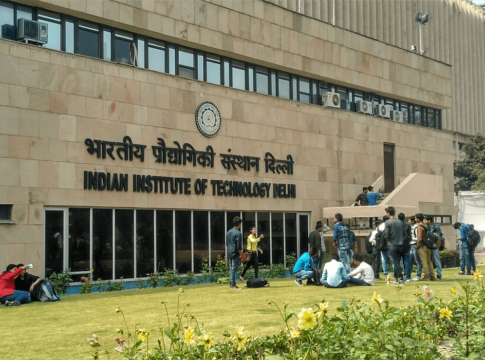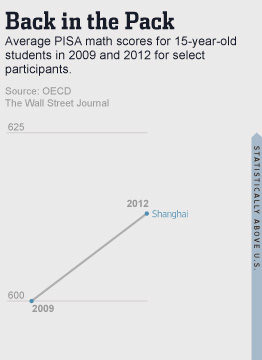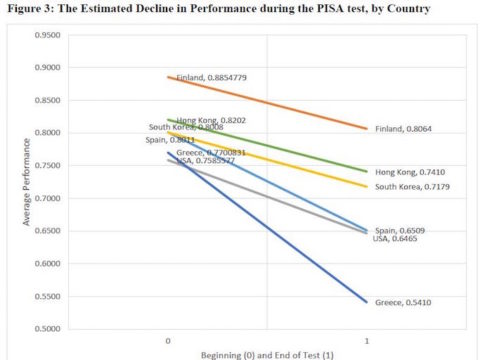Just hours ago, the latest round of data from the Program for International Student Assessment (PISA) was released to great fanfare. Under the auspices of the Organization for Economic Cooperation and Development (OECD), PISA has been assessing 15-year-olds in reading, math, and science every three years since 2000. This year over 60 “education systems,” almost all of them countries, participated.
In each new round of PISA results, the U.S. has been squarely in the middle of the pack. Our overall scores are statistically indistinguishable from the average of all OECD countries. But some of our economic competitors, including Japan, Korea, and Germany, have scored much higher. Korea’s math score this year was 554, Japan’s 536, and Germany’s 514, compared to 481 for the U.S. Science literacy and reading follow similar patterns.
While much of the press coverage will no doubt zero in on our middling performance and the bleak economic future it foretells, a far more disturbing pattern in the data is more likely to hurt us in the long run than will our mediocre average scores. What should scare us is the low percentage of students in the highest levels of performance (PISA level 5 and above).

Even a quick look at these numbers shows how far below some of our major economic competitors the U.S. is. Having such a small percentage of super-performers poses a far greater threat to our economic security and future than being “average” overall does. And it signals the need to reconsider some of the nation’s basic priorities in education policy.
For many years, the U.S. has worked hard to fulfill the promise that no child will be left behind. And the National Assessment of Educational Progress (NAEP) shows that we have made great progress in fulfilling that promise. The scores of African Americans, Hispanics, and low-income fourth and eighth graders in reading and math have leaped upward. And in the past 15 years or so, NAEP scores, especially in math, have too. But, at the same time, the percentage of students who score at NAEP’s advanced level has stagnated.
Yes, we must honor our commitment to disadvantaged students. But that’s only part of the best way forward. Our economy’s future depends as much on expanding the number and percentage of our most proficient students as it does on closing achievement gaps. Like NAEP data, this year’s PISA results bid us to revisit our educational priorities and find ways to nurture the next generation of high performers.
—Mark Schneider
This post originally appeared on The Quick and the Ed.





